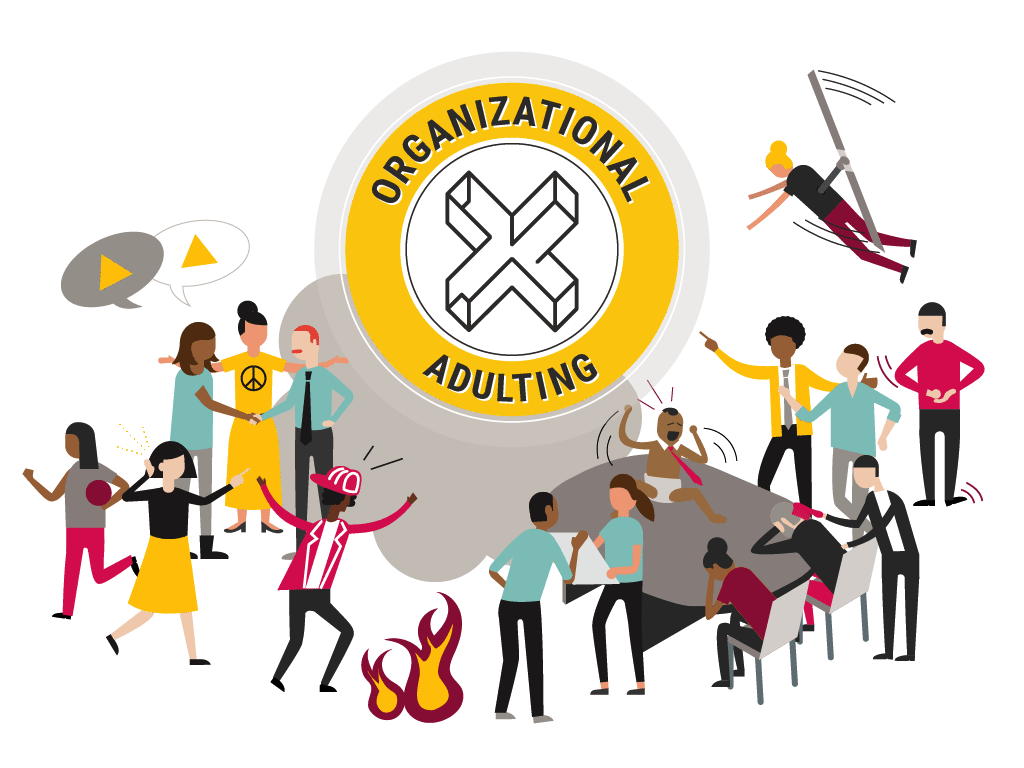Earlier this month we posted an Introduction to Organizational Adulting, XPLANE’s assertion that we must behave like adults at work and expect the same behavior in return from our colleagues. In our 25 years of working with large and small organizations, we’ve seen non-adult behaviors become significant barriers to change, innovation, and bottom-line business results.
Then we asked you, our followers and friends, to tell us which workplace behaviors are your biggest barriers to Organizational Adulting. The results are in! Your responses both surprised and impressed us. You gave us great food for thought, and a lot to explore. Here’s what you told us you were experiencing:
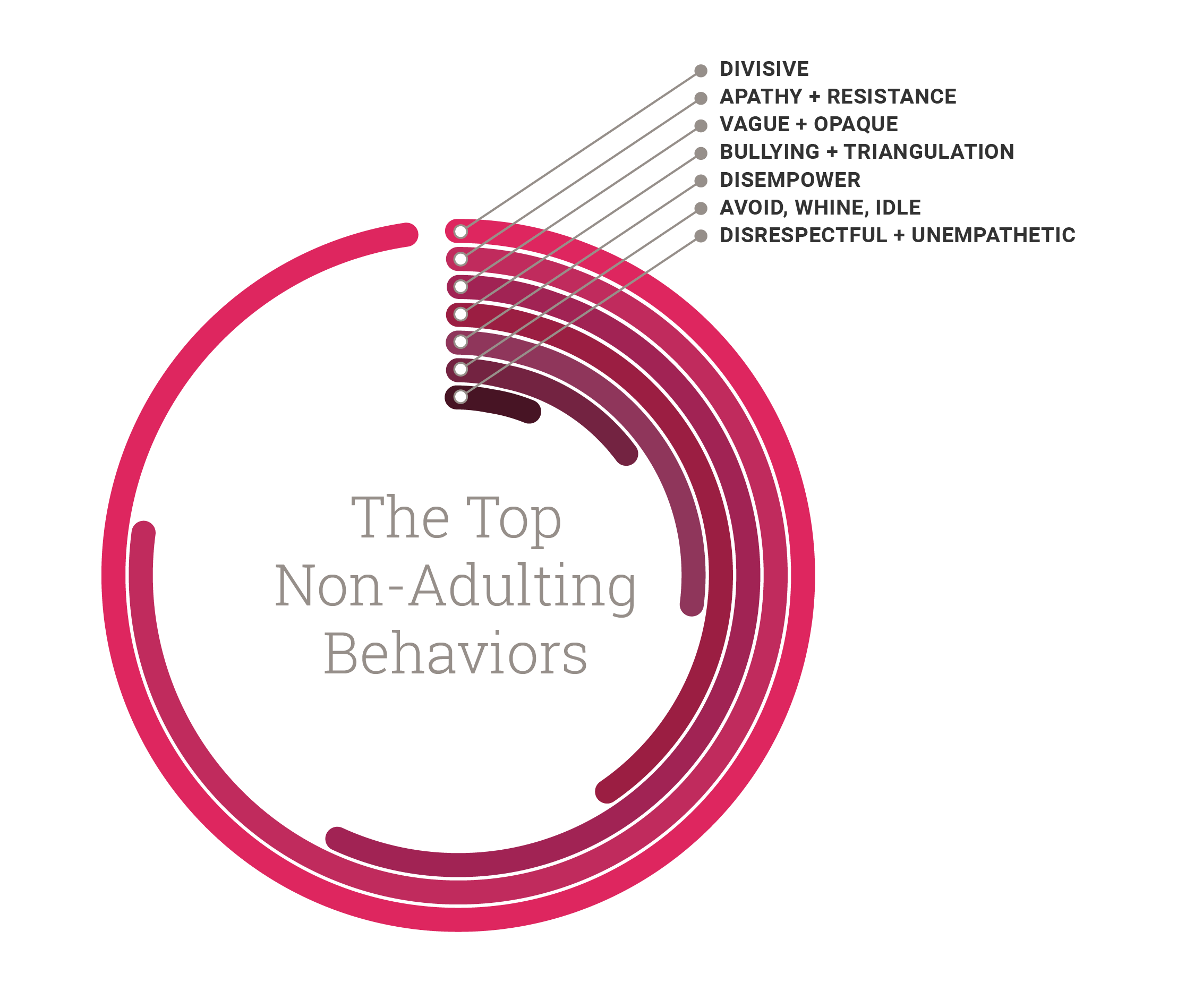
The “Barriers” Survey Results
We learned that almost 70% of you experience divisive behaviors and habits—workplaces that feel politically motivated, territorial, and siloed. Some 60% of you observed apathetic and resistant behaviors that prevent your teams and businesses from reaching goals and getting better results. While almost 50% of you said you would be better at your jobs if communication and engagement were more useful, transparent, and meaningful.
Bad Actors with Divisive Behaviors
Your topics will help us start having deeper conversations about adulting at work. And while most people don’t feel comfortable talking about behavior at work, behavior, like feelings, is a critical part of the work-life culture. Yet discussing it at work brings about deep discomfort. And so, it is only natural that we’ve come to allow bad actors to define how we work and interact in the workplace. Below are a couple of the bad actors we’ve seen with divisive behaviors. Along with them, we’ve included some examples of their adult counterparts.
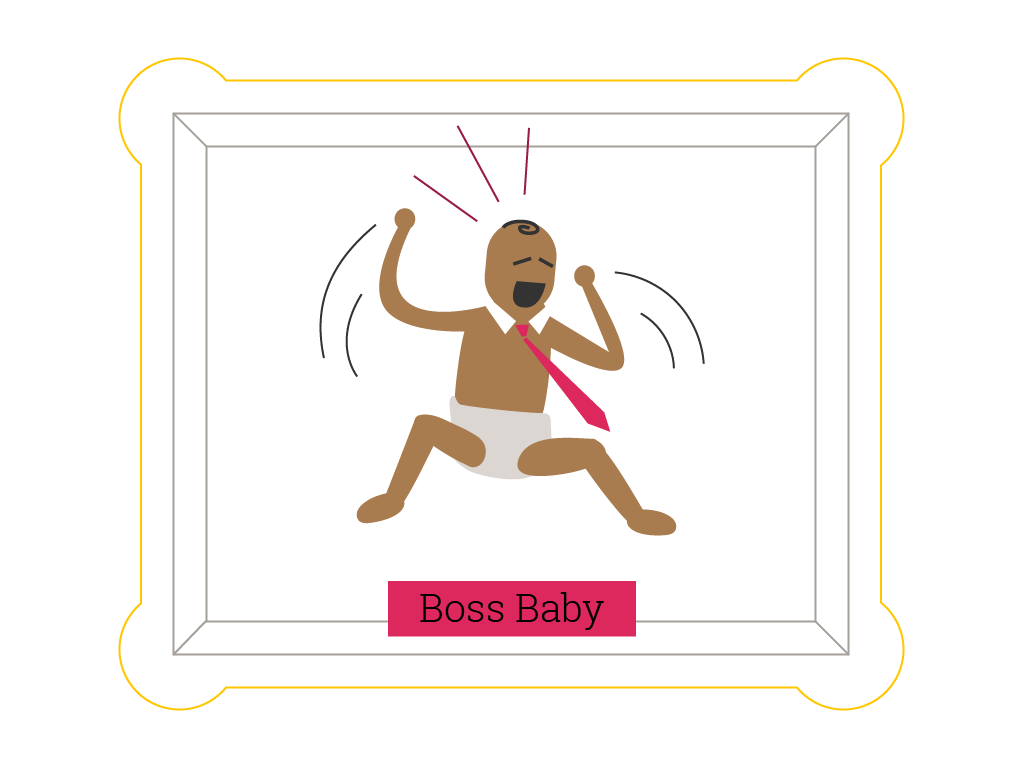 |
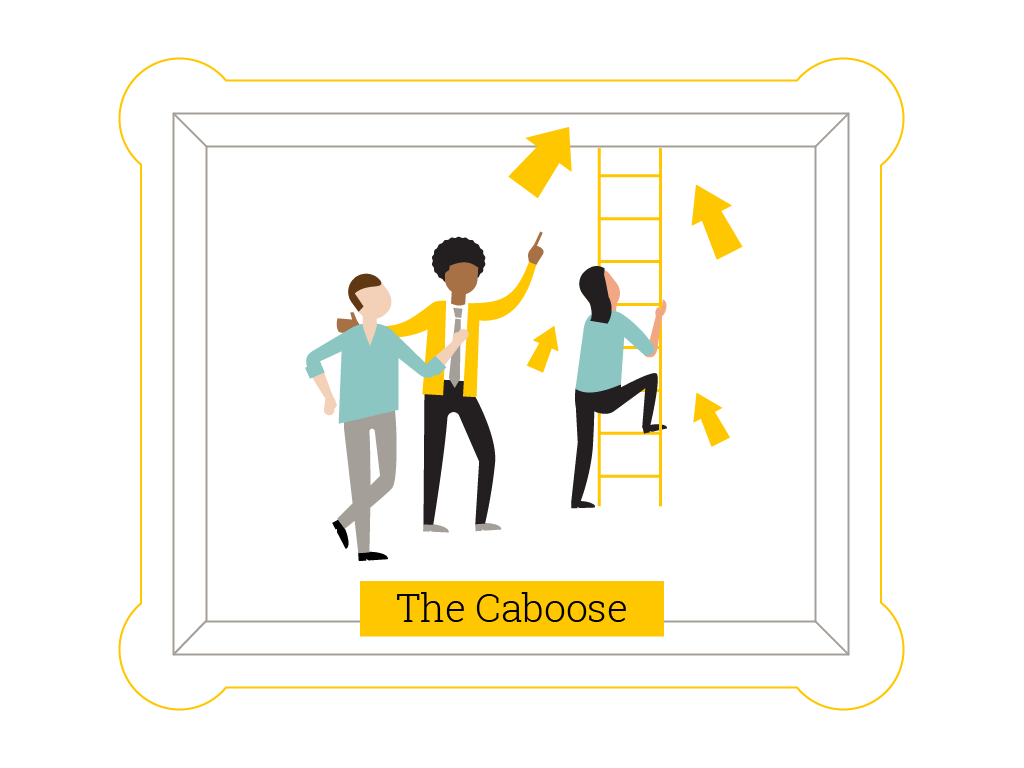 |
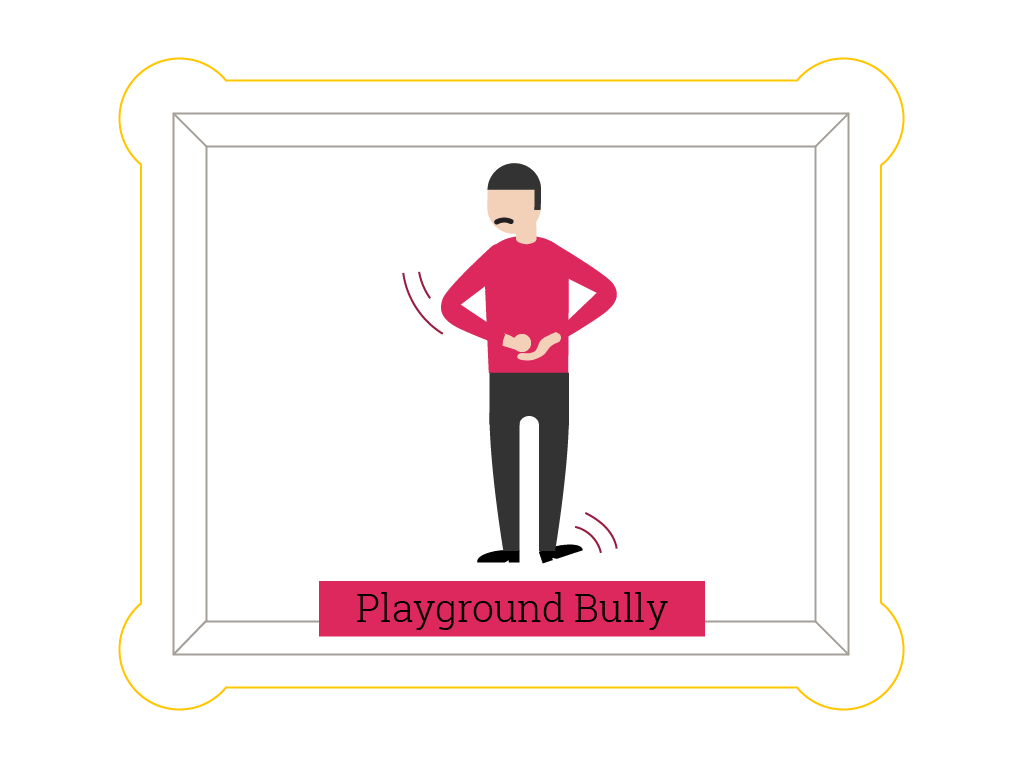 |
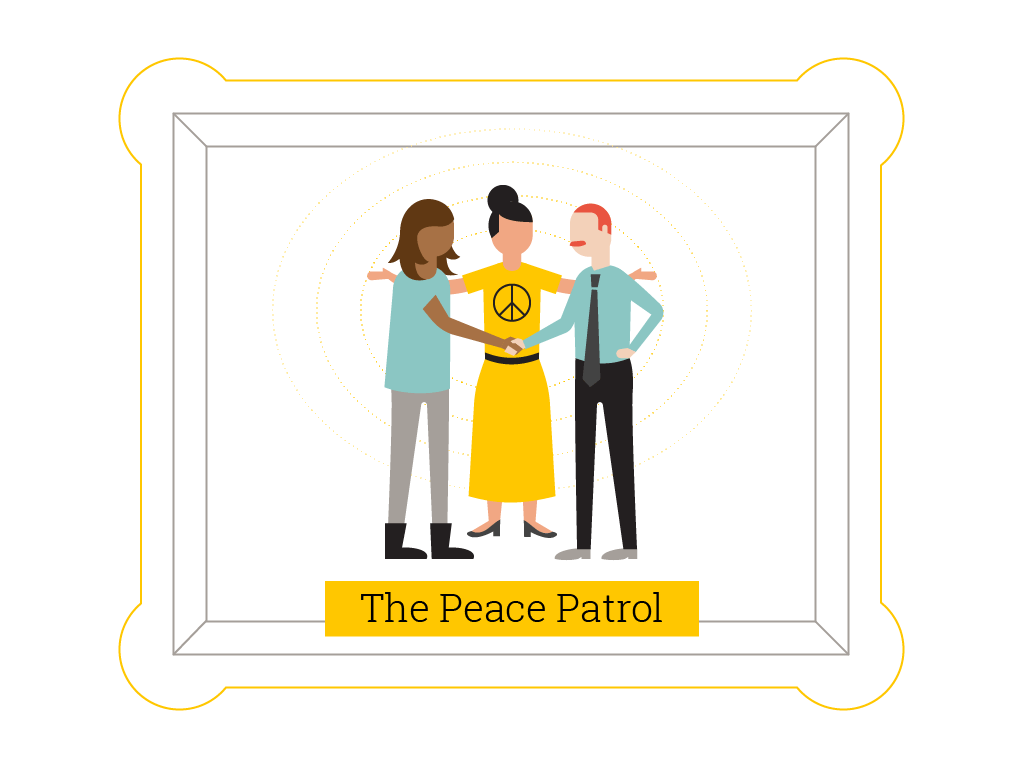 |
Boss Baby
First up is the “Boss Baby”. This person may be a senior executive or leader who is prone to infantile behavior; including tantrums and erratically changing expectations. They reject any solution that isn’t their own and are unwilling to clean up their own messes.
The Caboose
Counter to the “Boss Baby”, we present you with “The Caboose”. This person makes sure everyone is on board and no one is left behind. They remove barriers and let other people shine. They give others a sense of belonging and make sure they are heard.
Playground Bully
Next in our cast of characters is the “Playground Bully”. This is a co-worker, regardless of their role or level, who must control every meeting or project ensuring they get what they want or need to the exception of everyone else involved. This person also shifts blame for failures and takes credit for others’ successes.
Peace Patrol
The last cast member we’ll mention is the “Peace Patrol”. This person acts as a mediator, resolves conflicts, and makes sure everyone gets along.
Do any of these characters feel familiar to you?
At XPLANE we think it is time to tackle the discomfort around behavior head-on; let’s have real conversations and remove anything that stands in the way of business success and employee satisfaction. Join us for a series of three webinars where we’ll tackle your biggest barriers one by one: divisive behaviors, apathetic and disengaged behaviors, and vague and opaque communication. During each webinar, we’ll also continue to touch upon the various cast of characters we see contributing to non-adult behaviors and why they appear in the workplace.
Our first Organizational Adulting webinar was be held in December 2018. Our network of experts addressed divisive behaviors and shared their success stories. It was a lively conversation followed by an XPLANE exercise that attendees could take back to their organization and do with their colleagues.
If you missed our other Organizational Adulting blog posts, catch up on those below:
- Introduction to Organizational Adulting: Insights That Lead to Better Ways of Working
- Organizational Adulting: Your Barriers + Our Insights = A Live Conversation
- Organizational Adulting: Divisive Workplace Behaviors and How to Overcome Them
- Organizational Adulting: Overcoming Apathy and Disengagement in the Workplace
- Organizational Adulting: You Are What and How You Communicate
